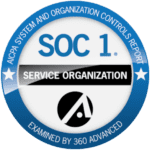Streamlining transportation and logistics is one of the most critical challenges facing businesses today. The intricate network of inventory movement from supplier to manufacturer to warehouse to retailer to customer, also known as the supply chain, needs meticulous management to maintain efficiency and cost-effectiveness.
One outstanding tool in the arsenal of contemporary supply chain managers is the Transportation Management System (TMS), a software solution that optimizes and facilitates freight movements.
But how do you go about choosing the best Transportation Management System software for your business? Read on to learn about the key considerations and how to ensure your new TMS becomes a competitive advantage.
What is a Transportation Management System (TMS)?
A TMS is a software platform that streamlines processes related to transportation operations, ensuring efficiency, cost-savings, and customer satisfaction. Features might include carrier selection, route optimization, load tendering, and freight audit and payment, amongst others.
The right TMS can become a central hub for your logistics, integrating with other systems like Enterprise Resource Planning (ERP) software to provide a holistic view of your transportation network.
The Path to the Right TMS
Selecting the correct TMS for your business requires a systematic approach. An efficient TMS must align with your company’s unique needs, budget, and long-term strategy. Here’s a step-by-step guide on how to select a TMS that will elevate your logistics:
Understanding Your Business Needs
Every business is unique, and so are its logistical challenges. Start the selection process by identifying your specific requirements. This includes assessing the volume and complexity of your shipments, your current pain points, and the areas where you see room for improvement.
Recognizing the Types of TMS
TMS solutions vary in complexity, functionality, and cost. They may be on-premise solutions that offer higher security and customization but also require significant investment and maintenance. There are also cloud-based systems that provide scalability and accessibility but may lack the tailor-made features of on-prem solutions. Understanding these types will help you shortlist TMS vendors that offer the right fit.
Evaluating System Capabilities
Once you have a clear set of requirements, you can start evaluating the capabilities of different TMS systems. Look for features that will directly address your logistics challenges, such as real-time tracking, automated carrier selection, freight cost calculation, and exception management. Additionally, explore the analytics capabilities in transportation management system (TMS) that can provide valuable insights into operational efficiencies and identify areas for cost savings.
Assessing Integration
Your TMS must integrate seamlessly with your existing software systems, such as your ERP, warehouse management, and order management systems. Check if the TMS is compatible with the systems you have in place or plan to implement. An API-rich TMS can make integration smoother and future-proof your technology stack.
Understanding Support and Training
Select a TMS provider that offers robust support and training. A comprehensive onboarding process can help your team to maximize the TMS’s potential. Look for vendors who provide user training, online resources, and dedicated customer support to ensure a smooth transition and ongoing success with the system.
Total Cost of Ownership (TCO)
The cost of the TMS goes far beyond the initial purchase price. With costs associated with implementation, training, maintenance, and any required hardware or software, the TCO can vary significantly. A clear understanding of the TCO will help you avoid unexpected expenses and ensure that the TMS fits with your budget.
Implementing Your Chosen TMS
With the TMS selected, the implementation phase is critical. This step transforms the potential of the TMS into tangible business benefits. Here’s how to ensure a successful TMS implementation:
Develop a Clear Implementation Plan
Work with your TMS provider to develop a clear and realistic implementation plan. This should include milestones, roles and responsibilities, and a timeline. Having a detailed plan in place helps to keep the project on track and ensures all stakeholders are on the same page.
Engage Stakeholders
Involving all relevant stakeholders, from the C-suite to warehouse staff, early on is essential. Stakeholders can provide valuable insights and feedback, and their engagement will be critical to the success of the TMS implementation.
Test and Adjust
Before fully deploying the TMS, conduct thorough testing to identify and address any issues. Use this phase to make any necessary adjustments to the system or the implementation plan.
Train Your Team
Comprehensive user training is vital for a successful TMS implementation. Provide your team with the knowledge and resources they need to use the TMS effectively. This might include hands-on workshops, user manuals, and ongoing support.
Monitor and Refine
After deployment, monitor the TMS’s performance and gather feedback. Use this information to refine your processes and the use of the TMS. Continuous improvement will help you to extract the maximum value from your TMS investment.
Leveraging Your TMS for Business Success
A successfully implemented TMS can become a powerful tool for driving business success. Here’s how to leverage your TMS to benefit your organization:
Gain Real-Time Insights
Use the TMS to gain real-time insights into your transportation network. Monitor key performance indicators (KPIs) to identify trends, logistical efficiencies, and cost-saving opportunities.
Improve Customer Service
An effective TMS can lead to improved customer service by providing accurate delivery times, shipment visibility, and proactive issue resolution. Happy customers are loyal customers.
Optimize Your Supply Chain
Integrate your TMS with other supply chain management systems to optimize your entire logistics operation. Streamline processes, reduce lead times, and lower inventory levels to save money and improve service levels.
Enhance Decision-Making
The data and analytics provided by a TMS can inform strategic decision-making. Use this information to make informed business decisions that improve efficiency and reduce costs.
Scale Your Business
As your business grows, your TMS should be able to scale with you. Ensure that your TMS can accommodate increased transaction volumes and the addition of new transportation modes and geographies.
By following these guidelines, you can increase the likelihood that the Transportation Management System you select will become a significant asset to your business, helping you to manage your logistics smartly and efficiently.
About Us
Are you looking for an all-in-one solution for your transportation management and freight audits in one place? Look no further than Hatfield & Associates.
We are one of the best supply chain management companies in Memphis, TN that works to reduce the transportation costs of our clients without compromising on quality or efficiency.
Our services include logistics support, freight pay and audits, supply chain optimization, and more. You can reach us at (901) 507-2615 or fill out our contact form to know more.
Use our TMS Software Checklist as a supply chain planning tool to match the right system with your needs.



